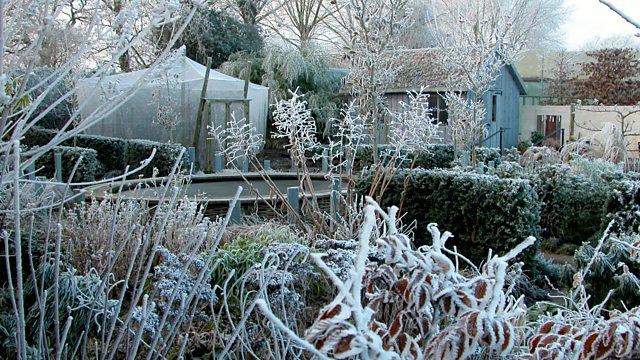Correspondence at Sparsholt
Peter Gibbs hosts an edition of the gardeners' panel discussion from Sparsholt College. With Chris Beardshaw, Bob Flowerdew and Pippa Greenwood answering listeners' questions.
Peter Gibbs hosts from the GQT potting shed at Sparsholt College as Chris Beardshaw, Bob Flowerdew and Pippa Greenwood tackle listeners' questions sent in by post, email and social media.
Matthew Wilson goes to meet the original gorilla gardener, Richard Reynolds, to explore an urban forest in the depths of a London council estate.
Produced by Victoria Shepherd.
A Somethin' Else production for 主播大秀 Radio 4.
This week's questions:
Q. I have a large, noticeable dip in my garden, which often floods after heavy rainfall. It does drain but as it is clay soil it is a very slow process. I have been told I should fill it in, could the panel suggest plants to use to make a feature of this area?
A. Hostas and Astilbe would grow well in both damp and boggy areas. Marsh Marigolds and Bog Irises are also recommended in wetter areas. Blackcurrant plants are resistant to water logging.
Q. Could the panel suggest plants that would thrive on the Hampshire Downs under the shade of large conifers and would be relatively easy to maintain?
A. Native Bluebells may work - however, there is a possibility the soil may be too dry in a dry, shaded environment. Another more unusual suggestion would be Paris Quadrifolia which has a small central flower and will spread naturally. Daphne Laureola, an evergreen with a scented small flower, cyclamen and wooden Anemones should also grow well.
Q. Why does some Ivy flower and not others?
A. As a young plant Ivy is in what is known as a 'juvenile state', during which it is full of vigour and energy and upward ascendancy. Whilst in this youthful state the plant will not flower. However once the Ivy reaches the point of maturity (which usually means it has run out of enthusiasm or support to continue growing) it will engage in a different mode of growth habit, the leaves will get larger and flowers should grow.
Q. Do the panel have any suggestions for a brown, carbon-rich material to use in my compost heap now that newspapers are read online?
A. Office waste would be a good substitute. Baled straw or sawdust would also work. Cardboard boxes would be great because worms love the glue. Consider adjusting the compost content by putting on dry deciduous foliage. Hay crop would also be a great natural option.
Q. Could the panel suggest a tree to replace a Norway Spruce in our southwest facing and exposed garden, 800ft (250m) up on the south edge of the Derbyshire Peak District? We would love a fruit tree.
A. Damson should be able to take on the conditions the location presents. It may not fruit for several years due to wind and frost, but when it does it could be a good crop. Plus, you get the spring blossom and Damsons tend to hang on until the autumn unlike plums. Another suggestion would be to try one of the Amalancier trees because they are wind resistant and have a large spring display of blossom. Finally Malus and Prunus are worth considering, particularly the Malus Tschonoskii, which is not a fruiting form but you will get early season flowers and great autumn colours. For something narrower try the Prunus Hillieri Spire or a Grayswood Ghost Birch. Or if you would like to grow from seed try the Hunza Apricot.
Last on
More episodes
Previous
Next
Broadcasts
- Fri 24 Jan 2014 15:00主播大秀 Radio 4
- Sun 26 Jan 2014 14:00主播大秀 Radio 4
Six of GQT鈥檚 naughtiest gardening innuendos
When Gardeners' Question Time got mucky.
Podcast
-
![]()
Gardeners' Question Time
Horticultural programme featuring a group of gardening experts


